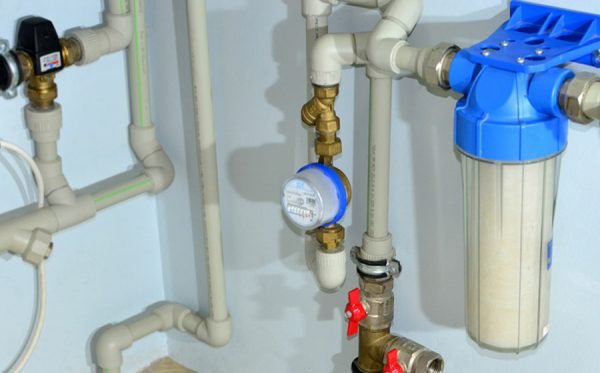Home improvement operations are one of the most critical in terms of personal projects. After all, shelter is as essential to survival as much as food. This is especially true given the current housing situation in the United States. When it comes to house renovations and repairs, funding sources are critical.
For example, you may need to enlarge or remodel your home or require foundation repair services to repair structural problems for you. Whatever the case, your needs and finances are critical elements to consider. Fortunately, there are several options for financing your home repairs. So, you must carefully consider all of your possibilities before deciding.
Table of Contents
Options for Home Improvement Financing
There are various great ways to obtain funds for repairing your home. Each one has its upsides, downsides, and requirements. Here, we will discuss five of these ways and their advantages and risks/disadvantages.
Home Improvement or Repair Loans
While home-repair loan interest rates are often high, those with strong credit might get the rates lower. There could also be a minimum credit score requirement.
However, these can differ from one state to the next and from one lender to the next. For example, any home renovation loan Florida state lenders may have a different minimum credit score requirement than those offered by California state lenders.
Pros
The following are some of the upsides of home repair loans:
- They involve fewer fees than other loans
- They do not necessitate the use of home equity
- They do not necessitate the use of collateral
- Because they are tiny amounts, they are easier to pay off
Cons
The following are some of the downsides of home repair loans:
- Can only be used for modest projects due to their small size
- They have high-interest rates because they are obtained without collateral
Personal Funding
Self-financing any home remodeling or improvement project is usually easier and safer. It simply entails using funds from your current financial reserves to fund the project.
However, you might not have the necessary funds in the bank. In this scenario, personal financing entails saving funds over a period to complete the project.
If you want to complete your project without taking on debt, this funding option is great. It’s also the best alternative if you’re not in a rush to complete the repair project.
Pros
Personal funding has the following advantages:
- There is no debt in personal finance
- Avoidance of risk: By self-financing your project, you avoid the financial risks of taking out a loan.
- Cost management: You may be more likely to successfully manage and decrease costs when you use your financial reserves or personal funds for your property. This may not be the case when you can simply take out a large loan.
Cons
The following are the downsides of self-funding your home repair:
- Time cost: It takes time to save money for any home improvement project. And if the job is large, it may take a long time to complete. As a result, putting money aside for a pressing project is impractical.
- Opportunity Cost: While putting money aside for a project takes time, leveraging current financial reserves for a home remodeling project has an opportunity cost. If you use all of your available funds for house repairs, you may have to put off other necessary chores
Home Equity Loans
A home equity loan is a fixed-rate home renovation loan that you can get using your home equity as security or collateral. It’s regarded as a “second mortgage” because it’s comparable to an actual mortgage. It’s essentially a method of converting your home equity into the funds you’ll need to complete your home renovation project.
The loan amount is decided by the difference between the current market value of the home and its outstanding mortgage balance. Other criteria, such as your credit score influence the amount and interest rate of the loan you can acquire.
If your repair or renovation project is large in scope, a home equity loan is a good home renovation financing alternative. They are repaid in a set number of payments over a set time.
Pros
The following are some of the upsides of home equity loans:
- You can utilize them for reasonably significant projects
- They are available at a cheaper interest rate
- You can repay the loan for up to 3 decades
- You can complete urgent home projects
- If you already know how much your home repair project will cost, home equity loans are an excellent option because you get the required amount upfront
Cons
The following are some of the downsides of home equity loans
- They put your home in jeopardy of being foreclosed on if you don’t pay up as agreed
- They entail additional costs
- If you already have a mortgage on the house, you will have to pay both the mortgage and your home renovation loan
- Because the lender gives you all of the money at once, you must carefully schedule all of your expenses to avoid running out of money
Home Equity Line of Credit (HELOC)
This is a credit line that you can get using the equity in your home as collateral. They’re similar to HELOCs, except they work more like credit cards.
The credit limit is more extensive because they were obtained with collateral. However, they also have lower interest rates, which are normally variable but can be fixed. They’re usually given out in the form of credit cards or checkbooks.
Your home equity, debt-to-income ratio, and credit score are all factors that influence how much credit you can get. HELOCs are a good solution when you have many relatively low-cost projects to fund regularly.
Pros
The following are some of the upsides of HELOCs:
- You can re-use the money after being repaid, and they’re inexpensive
- The amount you pay depends solely on how much you borrow
Cons
The following are some of the drawbacks of HELOCs:
● The lender’s repayment terms are subject to alteration
● They have much higher interest rates than Home Equity Loans
● Because loan rates can be modified, your rates and payment may rise
Personal Loans
Personal loans are another viable option for financing home renovations. You might wish to explore a personal loan if you don’t have available finances or enough equity to qualify for a suitable HELOC.
Personal loans do not require collateral and are easier to obtain than HELOCs. They do, however, come with hefty interest rates. On the other hand, people with good credit can get personal loans at much cheaper interest rates.
Pros
Personal loans for home repairs provide the following benefits:
- They are relatively accessible when compared to other lending options
- They’re ideal for last-minute house repairs
- They are quite easy to obtain
- You don’t have to put up any money to get them
Cons
The following are the drawbacks of personal renovation loans:
- They have short and rigid payback periods (usually 2 to 5 years)
- They have higher interest rates than non-collateralized loans
- Your creditworthiness is a factor. The less creditworthy you are, the less likely you are to get approved for a loan at a reasonable interest rate.
- The loans are typically for small sums of money. As a result, you won’t be able to employ them for large tasks.
- Late fees are costly
Conclusion
Home improvement projects are significant undertakings that necessitate cash and planning. Choosing which kind of finance to use necessitates careful analysis, as making the wrong decision could have disastrous implications.
One or more of the forms mentioned above of home improvement financing may suit your particular financial situation. We encourage you to think about them thoroughly and select the best option for your project.







